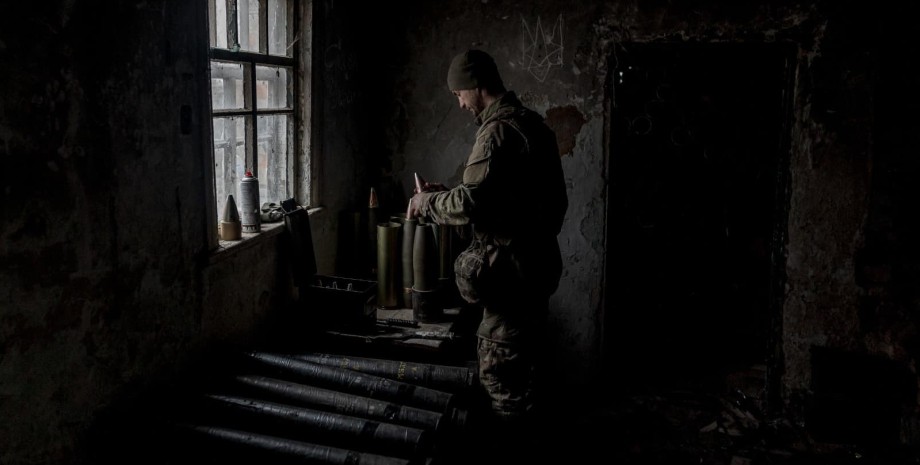
 By Victor Duda
By Victor Duda
At the end of June, the occupiers concentrated there to eight shock assault brigades, occurring either in small groups of 5-7 people or larger, 10-30, writes UP. According to the commander of the 108th separate battalion "Wolf Da Vinci" of the 59th Brigade Sergey Filimonov, a position held by 4 Ukrainian soldiers can occur up to 80 Russians a day. Its unit stands south of Selidovy and the most common type of wounds from Filimon's fighters is bullet, obtained in a near small rifle battle.
One of the commanders of the 31st brigade, which previously stood along the railway in the village of Progress, recalls what superhuman efforts it costs to keep defense. "I remember how my boys said," Everything, the commander, I give up! " The infantry stops ended during the battles near Avdiivka, that is, in March. If then 50 shells were issued for one mortar per day, then in September-much less,-says the interlocutor in the 68th brigade.
"It's a drop in the sea for defense of such an area," he says, adding that the Russians work more often than the defense forces. The battalion of one of the brigades, which was already withdrawn from the Pokrovsky direction, received three mines a day for the 120th mortar. And the fighters rescued only 82 mines, which were given 40-45. There is no month for some types of shells and the situation is slightly rescued by the FPV-therots provided by volunteers.
At the same time, in artillery, the Russians water Ukrainian positions with managed airbams, which the Ukrainian army cannot counter. One of the servicemen of the 47th brigade notes that the first problem of the Pokrovsky direction is the number of personnel, the second-its preparation, and the third-the level of development of the command of the units.
The serviceman who spent half a year in the Pokrovsky direction emphasizes that the lack of defense forces was the lack of people, especially infantry. The shortage of fighters was always felt by everyone, because the crews were thrown into incomplete ones.
For example, the 110th Mechanized Brigade was called to "extinguish the fire" in reeds just two months after withdrawal from Avdiivka, where they have been in defense for almost two years, of which for the last six months-reflecting the Russian offensive with technique and infantry. And it is obvious that in two months the brigade did not have time to recover and recruit new people. As of July 2024, the infantry of the 110th was filled by less than 40%. And now the team is still in this direction.
In March 2024, the 68th brigade, without rest, but in a relatively completed form, was removed from the Kupyansk-Lyman line and sent to the Pokrovsky direction. In the first village of Semenivka, a couple of kilometers west of Avdiivka, the unit suffered significant losses. "If in Semenivka we had about 90% of experienced people in the unit and 10% of newcomers, now it is about the same ratio, only on the contrary.
And the average age of beginners may not even be 45+, but 55+," - explains the interlocutor in 68 -th. Much better was the situation with the staffing of created crews-for example, in 151. However, she did not have combat experience at all. In the Pokrovsky direction, long -term defensive points (so far) were erected, the trenches, however, much of these structures are not adapted for real defense.
Often, they stand in the middle of the field, making them visible to the enemy and inaccessible to bring people, BC and more. "When Bezlazha teaching a photo of empty trenches and writes, and why no one guarded them, I understand why. Because it is a fool-to sit in the middle of a naked field in a pit. Sooner or later you just arrive in the muzzle fpv-Ih,"-states one of servicemen named Vitaliy.
Sergei Filimonov emphasizes that most of the positions, even despite pre -prepared, are the soldiers of "Wolves Da Vinci" have to dig on their own. Logistics cannot be performed in the middle of the field in the middle of the field. The anti -tank ditches leading from the enemy's position to the rear of our positions cannot be observed.
"These fortifications help the enemy more than to defend us," he emphasizes, adding that he does not even have people to occupy the support points in the Pokrovsky direction. He believes that a person who is relevant to these fortifications should be criminally liable. The Pokrovsky direction is responsible for the "Khortytsia" and OTU "Donetsk". The first commander of "Khortytsia" was Lieutenant General Yuri Sodol, the Brigadier General Andriy Gnatov is acting.
The first commander of "Donetsk" was Major General Edward Moskalov, who became the head of the Ukrainian military commandant in the Kursk region of Russia. The current commander of "Donetsk" is Colonel Oleksandr Lutsenko, who was a combrigant of the 79th Brigade of DShV. Khortytsia and OTU "Donetsk", which are responsible for the Pokrovsky direction, were refused to answer the questions of the UP about the reasons for the rapid advancement of the Russians.
The General Staff of the Armed Forces informs that 157 combat clashes have been recorded over the past day. In the Pokrovsky direction, Ukrainian defenders stopped 40 attacks of the aggressor. The most active Russian invaders operated near Vozdvizhenka, Grodivka, Novogrodivka, Marynivka and Red Yar. The highest concentration of hostile attacks is recorded near Grodivka and Novogrodivka.










All rights reserved IN-Ukraine.info - 2022